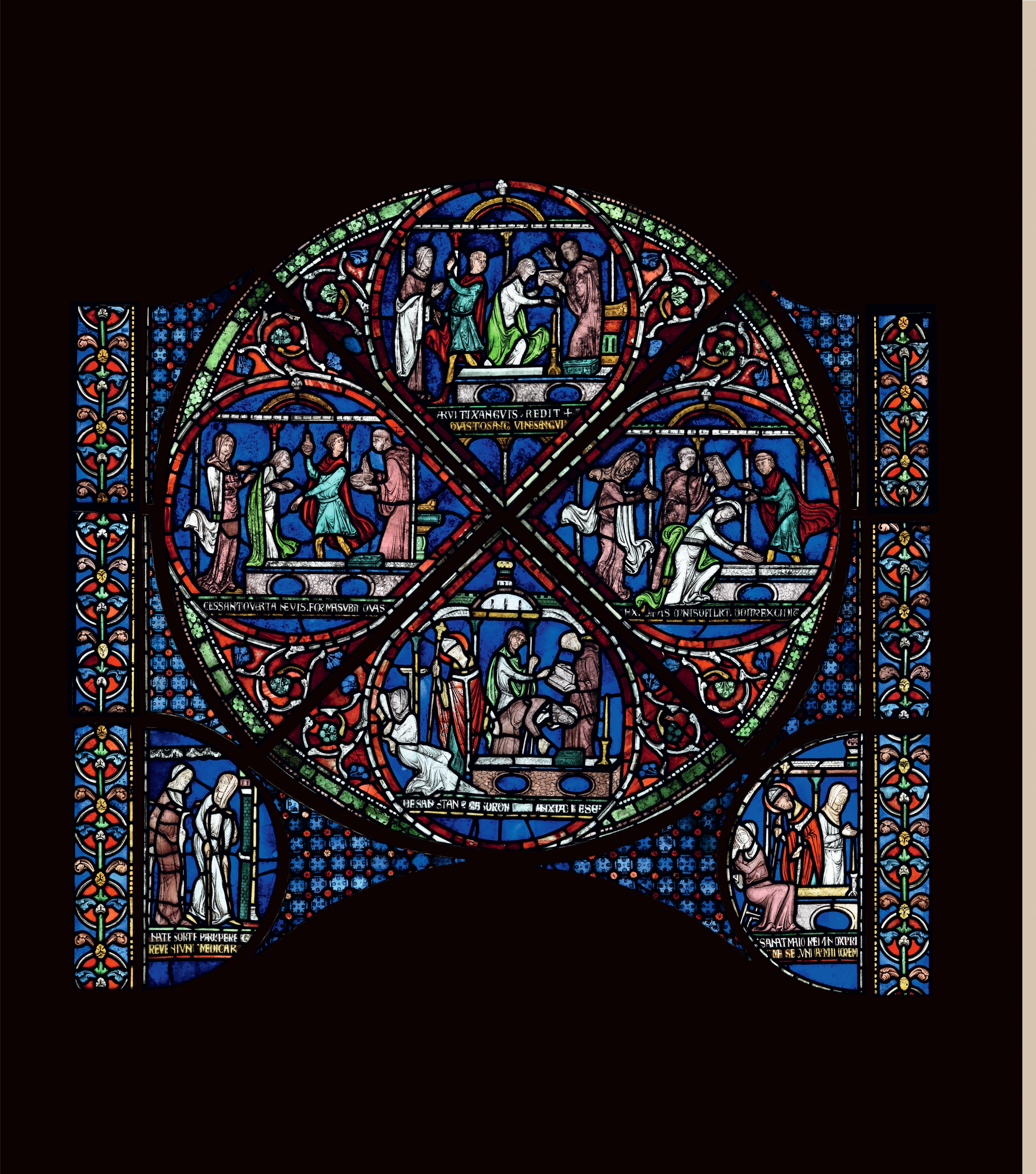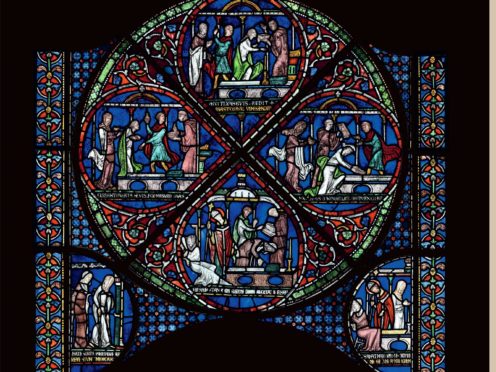A Thomas Becket stained glass window, made shortly after his death to depict his miracles, has been in the wrong order for hundreds of years, experts have discovered.
The find was made in preparation for a British Museum exhibition on Becket, the Archbishop of Canterbury who was brutally murdered by knights with close ties to his friend turned foe – King Henry II.
Their friendship had soured and they clashed in a dispute over the division of power between the crown and the church.
The stained glass windows stood next to Becket’s shrine at Canterbury Cathedral, a destination for pilgrims for hundreds of years.

The shrine was destroyed in the 16th Century, under the orders of King Henry VIII, who ordered the obliteration of Becket’s legacy, calling him a traitor to the crown.
Depictions of Becket in the glass were later vandalised and some of the windows destroyed.
Experts now analysing the glass under a microscope believe the panels and scenes within the stained glass window were hastily reassembled in the wrong order when they were restored in the 1660s.
The stained glass window depicts miracles attributed to Becket.
The pieces, now being reassembled in the right order within the window, involve a story of Becket curing leprosy and replacing genitals which had been removed as punishment for theft.

The latter is thought to feature the earliest known depiction of castration in medieval art.
The discoveries mean “we may have finally revealed” the window’s “true meaning”, experts said.
It is thought that panels in the other six remaining windows may have been mixed up too and it is hoped “that eventually we might unravel all these secrets in all these miracle windows”.
After 350 years in the wrong order in situ at Canterbury Cathedral, the stained glass window will be shown with its pieces in the correct order in the British Museum exhibition, where it is being loaned, and for the first time at close-up, eye level.
Experts discovered spots, painted on the glass, to show the “ravages of leprosy” under the microscope.

Leonie Seliger, director of stained glass conservation at Canterbury Cathedral, said: “The miracle windows are medieval versions of graphic novels illustrating the experiences of ordinary people.
“They greeted the pilgrims at the culmination of their journey to Becket’s shrine with images that would be reassuring and uplifting.
“The window that will be shown at the British Museum is only one of seven that remain, and they are one of Canterbury Cathedral’s greatest treasures.”
Lloyd de Beer, co-curator of Thomas Becket: Murder and the Making of a Saint, said “The violent death of Thomas Becket is the ultimate true crime story.
“It’s a real-life tale as dramatic as Game of Thrones and we’re going to lead visitors through every twist and turn of this remarkable plot.
“There’s drama, fame, royalty, power, envy, retribution, and ultimately a brutal murder that shocked Europe.”
Over 100 objects including reliquaries, jewellery, pilgrims’ badges, sculptures and manuscripts will go on display.
Becket rose from ordinary beginnings to become one of the most powerful figures in England, serving as Henry II’s “right hand man” as royal chancellor as well as Archbishop of Canterbury.
Miracles were attributed to Becket within days of his death which took place just weeks after he returned to England after exile in France.
His blood was collected after his murder and diluted with water for the “miracles” and he was canonised as a saint.
It is hoped that Thomas Becket: Murder and the Making of a Saint will open in April, subject to lockdown rules.
